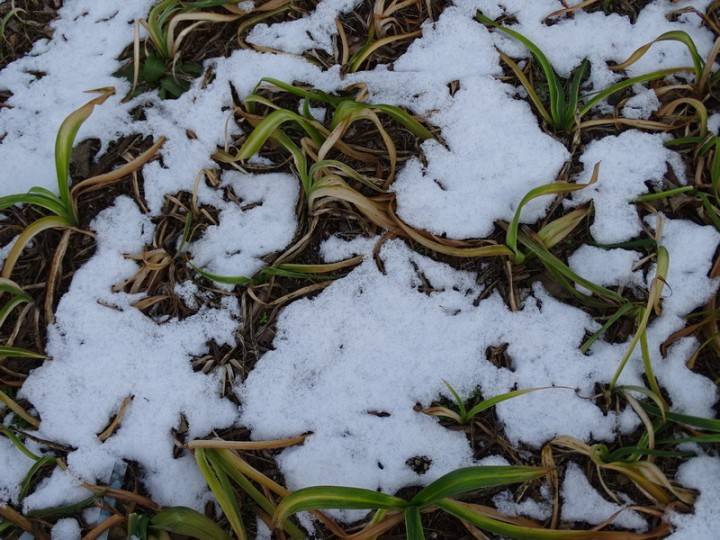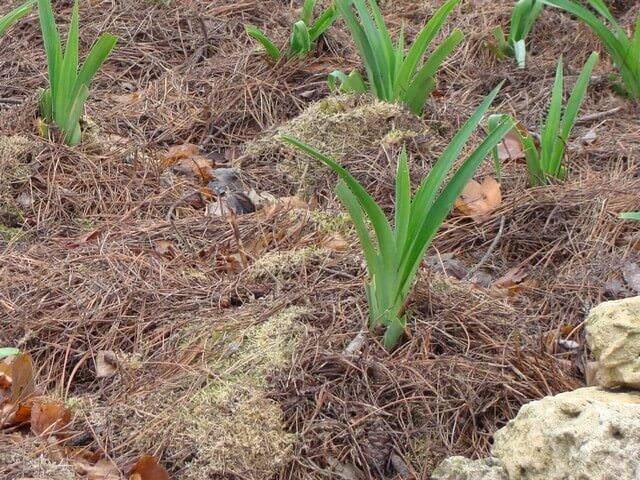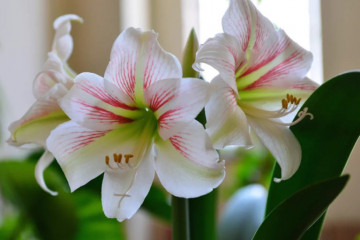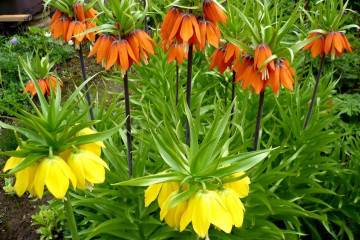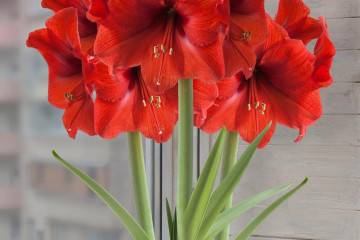How to prune a daylily after flowering
Content:
Daylily belongs to herbaceous perennials. During winter frosts, the vegetation process continues, and therefore the foliage dies off during this period. Not all gardeners know whether to prune the daylily for the winter and after flowering.
Daylily flowering period
The flowering period of daylilies can be different, depending on the variety. When purchasing a plant, these terms can be viewed on the package. The earliest species begin to bloom in May, but there are quite a few of these, and outwardly they resemble wild flowers. In the early ones, the buds begin to bloom in late June and early July. At the end of the 7th month, you can wait for blossoming flowers from medium-sized daylilies, and in August, late ones will also ripen.
In the middle lane, perennial flowering occurs in July-August, some flowers may begin to appear in June. Dates vary in most cases due to the climatic conditions in which the flowers grow.
It is also worth paying attention to the landing site. If the daylily is planted in a shady place, then it will bloom a couple of weeks later. But at the same time, it will be longer to delight with your colorful flowers.
Trim or not
Pruning daylilies has the following goals:
- Prevention of decay of foliage that occurs during thaws in early winter or late autumn. This process begins with the appearance of flowers on the leaves, and subsequently provoke rotting of the roots, which is detrimental to the plant.
- Prevention of the development of diseases and the appearance of pests. The leaves often contain pathogens or insect larvae, which are removed directly with this part of the flower.
Pruning your plants is recommended in most cases as this will keep it healthy until next season. However, many gardeners have a different opinion. But everyone agrees on what to do if the daylily has faded - it is better to remove the peduncles, since the flower spends a lot of energy and nutrients on the ripening of the seeds.
When to prune after flowering
Depending on the classification of daylilies, some of them may continue to bloom until frost. When, in this case, is it worth getting a haircut? November is the best time for such procedures. In deciduous flowers, the dormant period begins almost immediately after they begin to fade.
In semi-evergreens, the periods of flowering and dormancy differ in time depending on the climate in which they grow. But evergreen daylilies bloom before the onset of frost, so in November it is required to shorten their ground part. However, in this case, it is also worth knowing how to trim the daylily correctly so as not to damage it.
In a rainy autumn, it is worth cutting wet flowers immediately after they wilt, but you should not rush with the leaves, since they can remain green until November. If they wilted, then you can cut off their ground part.
If the daylily has faded, what to do next needs to be decided depending on many conditions: air temperature, the state of the flower. Pruning must be carried out immediately before stable subzero temperatures, if after them there is a thaw, the flower may begin to grow.
How to trim properly
Any trimming should be done with sharp tools, whether it's a knife or a pruner. Also, they should be treated with an antiseptic so as not to bring the disease. Autumn cutting does not imply great complexity, since you simply need to shorten all the leaves, leaving 15-20 cm from the soil surface.
It is worth remembering that you should not cut too short, as this can lead to rapid plant growth as soon as the first thaw comes. It is recommended not to leave cut leaves next to the plant, since it can not only begin to rot and harm the flower, but also rodents can start in it. If there are insects on the leaves or they are affected by diseases, it is recommended to burn them. Otherwise, it can simply be attributed outside the site.
Some gardeners are used to simply breaking off the leaves by hand. However, without the presence of such skills, it is better not to undertake this procedure, since this way you can injure the plant. Damaged leaves can begin to rot, and this process will subsequently spread to the root collar, thereby destroying the plant.
Care after pruning
Preparing plants for wintering requires performing a certain series of actions that will help perennial flowers survive this period. Often it all ends with the invention of shelter and pruning, but not all daylilies need this.
Top dressing and watering
First of all, in the fall, perennial plants need watering. It is worth monitoring the weather - if there are prolonged rains, the procedure should be abandoned, so as not to cause rotting of the root system. Daylilies are undemanding to watering, since they accumulate liquid in the pulp of the rhizome processes. But if the autumn was dry, then watering is worth it.
After pruning, you need to fertilize the plants. This can be done with the help of fertilizers containing potassium and phosphorus - they nourish flowering crops with all the necessary nutrients. At the end of September, organic matter or wood ash can be added.
Shelter creation
The climate has a significant impact on the need for some procedures. If the winter is snowy, then the natural shelter will help the plants to survive the cold snap with ease. However, if precipitation is not observed, and the temperature has already dropped significantly below 0 degrees, it is worth making a shelter that will save the daylily.
It is possible to increase the winter hardiness of daylilies by mulching with the introduction of tree bark, peat, spruce branches, dry sand. Some gardeners add straw and hay to this list, but rodents can start in these components.
Most often, evergreen or semi-evergreen varieties do not withstand the Russian winter. For them, it is worth making additional insulation with spruce branches, geofabric, lutrasil. In particular, this precaution is necessary if the plant was planted this year.
Caring for a flower is quite simple, and therefore many gardeners decide to plant it in their garden, but not all of them know how to cut a daylily after flowering and whether it is required to do it. The procedure is not necessary, but it increases the chance of getting a healthy plant in the spring, rather than a rotten one.


